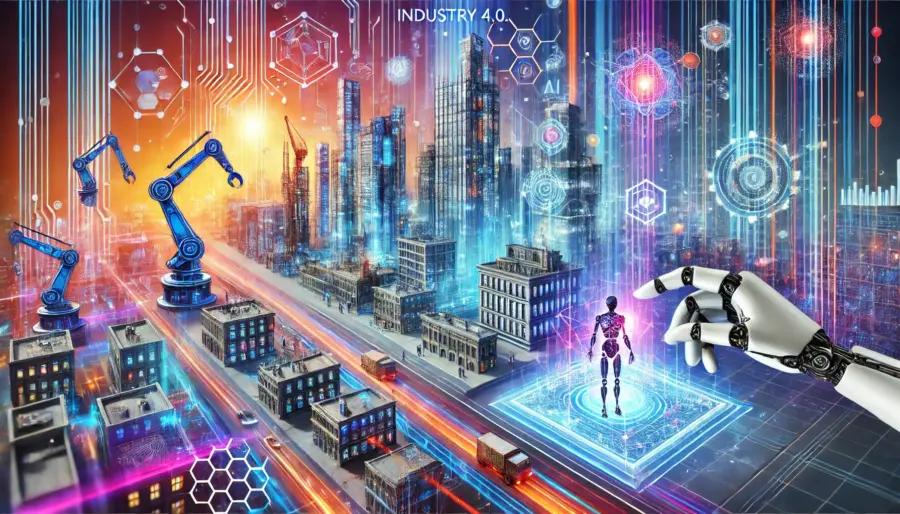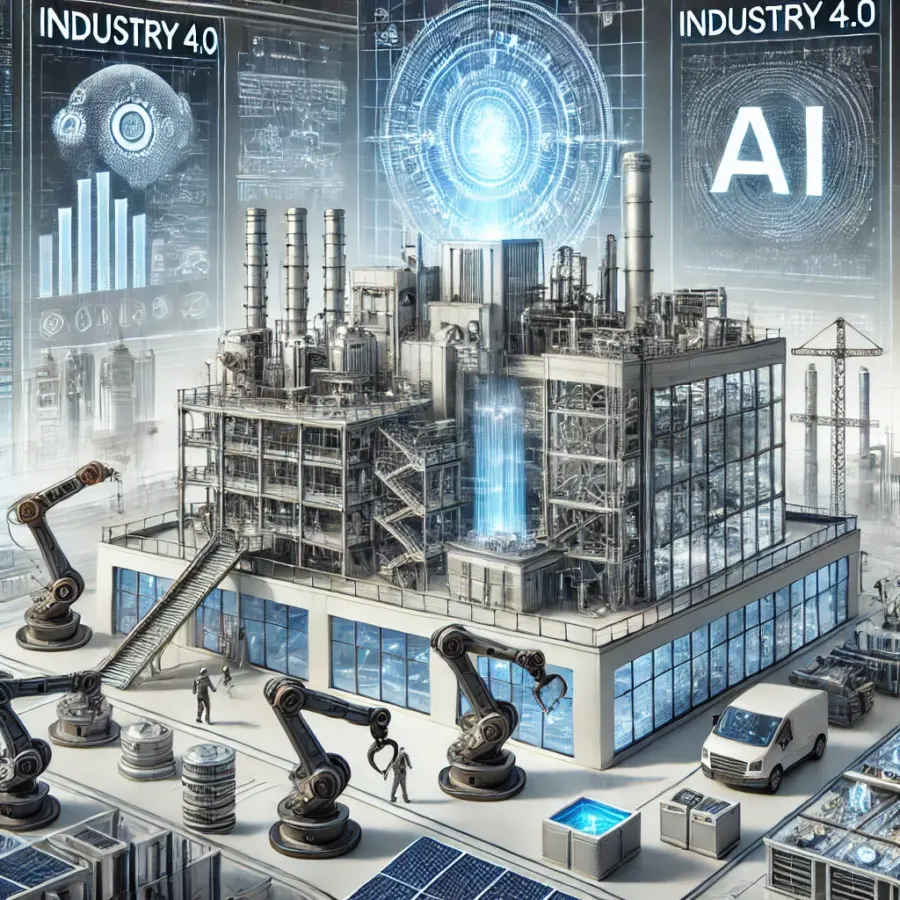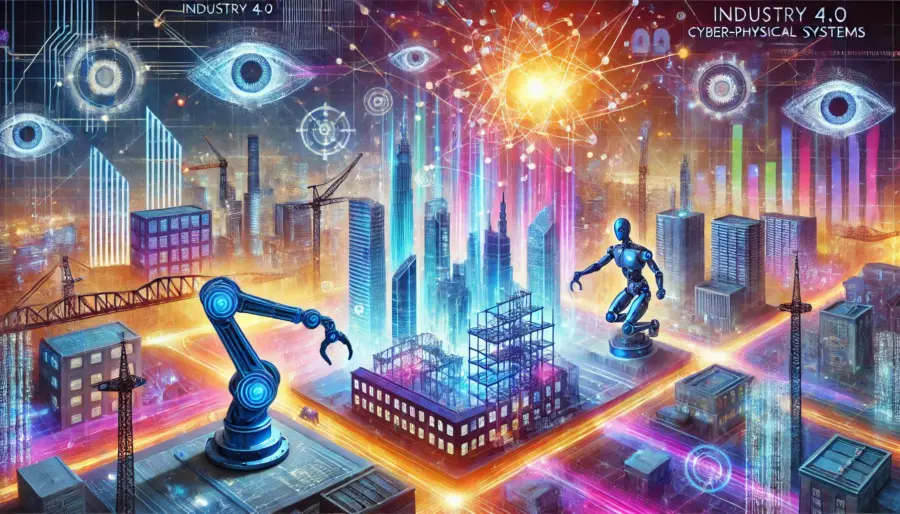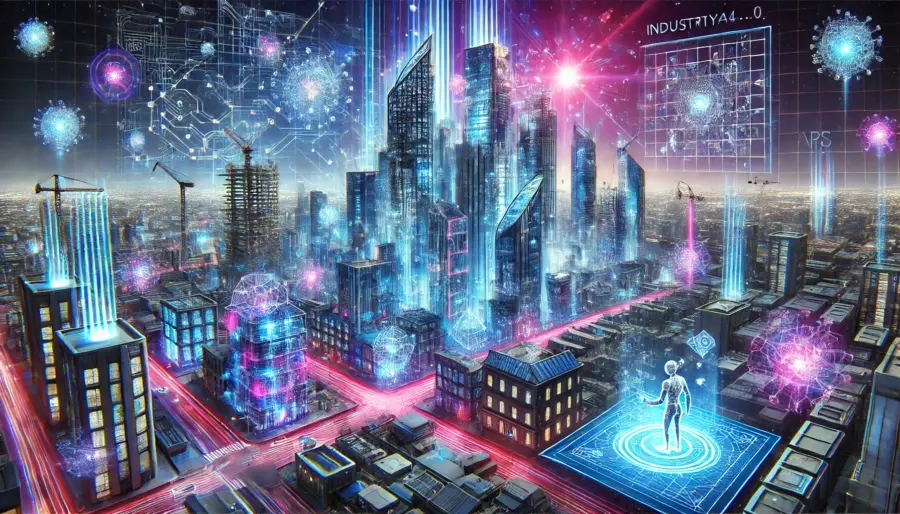Industry 4.0, Cyber-Physical Systems, and Artificial Intelligence: Transforming Architectural Practices
Steps in your green building process
BY JOSEPH AZAR
March 2025

Abstract
Industry 4.0 signifies the fourth industrial revolution, characterized by the integration of advanced digital technologies into manufacturing and other sectors.
Central to this transformation are Cyber-Physical Systems (CPS) and Artificial Intelligence (AI), which collectively enhance operational efficiency and innovation.
This article explores the interrelation of Industry 4.0, CPS, and AI, emphasizing their impact on architectural practices.
By examining current research and applications, the study provides a comprehensive understanding of these technologies’ roles in reshaping architecture.
- Introduction
The convergence of digital technologies has ushered in a new era known as Industry 4.0.
This phase integrates Cyber-Physical Systems (CPS) and Artificial Intelligence (AI) to create intelligent, automated, and data-driven environments.
In architecture, these advancements offer novel approaches to design, construction, and building management, leading to more efficient and sustainable practices.
- Industry 4.0: An Overview
Industry 4.0 represents a paradigm shift from traditional manufacturing to smart, interconnected systems.
It leverages technologies such as the Internet of Things (IoT), cloud computing, big data analytics, and AI to create intelligent networks that can autonomously exchange information and trigger actions. This transformation leads to improved productivity, customization, and flexibility in various sectors, including architecture.
- Cyber-Physical Systems (CPS): The Backbone of Industry 4.0
CPS are integrations of computation, networking, and physical processes.
They consist of embedded computers and networks that monitor and control physical processes, with feedback loops where physical processes affect computations and vice versa.
In architecture, CPS can be applied in building management systems, smart grids, and responsive infrastructures, enabling real-time monitoring and adaptive control of building operations.

- Artificial Intelligence (AI): Enhancing Decision-Making and Automation
AI involves the development of algorithms that allow machines to perform tasks that typically require human intelligence, such as learning, reasoning, and problem-solving.
In the context of Industry 4.0, AI analyzes vast amounts of data generated by CPS to optimize processes, predict outcomes, and support decision-making.
Architectural applications include predictive maintenance of building systems, energy consumption optimization, and automated design generation.
- The Interconnection of CPS and AI in Industry 4.0
The synergy between CPS and AI is fundamental to the realization of Industry 4.0. CPS provide the real-time data and physical interaction with the environment, while AI processes this data to derive insights and make autonomous decisions.
This integration enables systems to adapt to changing conditions, optimize performance, and enhance user experiences. In architecture, this manifests as smart buildings that respond dynamically to occupants’ needs and environmental conditions.
-
Architectural Applications of Industry 4.0 Technologies

6.1. Smart Building Design
AI-driven generative design algorithms enable architects to explore a multitude of design alternatives, optimizing for factors such as light exposure, energy efficiency, and spatial organization.
CPS embedded in building materials and systems provide real-time data on structural integrity, environmental conditions, and occupancy, informing design decisions and facilitating adaptive reuse of spaces.
6.2. Construction Automation
Robotics and automated machinery, guided by AI and CPS, streamline construction processes, reducing labor costs and construction timelines.
Drones equipped with sensors monitor construction sites, capturing data for progress tracking and quality assurance. This automation leads to safer construction environments and more precise execution of architectural plans.
6.3. Building Performance Optimization
AI algorithms analyze data from CPS within buildings to optimize heating, ventilation, air conditioning (HVAC), lighting, and security systems.
This optimization enhances occupant comfort while reducing energy consumption, contributing to sustainability goals. Predictive analytics anticipate maintenance needs, minimizing downtime and extending the lifespan of building systems.
6.4. Urban Planning and Development
The integration of AI and CPS facilitates the development of smart cities, where data-driven insights inform urban planning decisions.
Traffic management systems adapt to real-time traffic conditions, public services respond dynamically to citizen needs, and infrastructure development aligns with sustainable practices.
Architects play a crucial role in designing urban spaces that leverage these technologies to enhance quality of life.
- Challenges and Considerations
While the integration of Industry 4.0 technologies offers significant benefits, several challenges must be addressed:
- Data Security and Privacy: The extensive collection and analysis of data raise concerns about security breaches and unauthorized access.
- Interoperability: Ensuring seamless communication between diverse CPS and AI systems requires standardized protocols and frameworks.
- Ethical Implications: The autonomy of AI systems in decision-making processes necessitates ethical guidelines to prevent biases and ensure accountability.
- Workforce Adaptation: The shift towards automation demands new skill sets and may impact employment in traditional roles.
- Future Outlook
The continued evolution of Industry 4.0 technologies promises further advancements in architectural practices.
Emerging trends include the use of digital twins—virtual replicas of physical buildings—for real-time monitoring and simulation, advanced robotics for personalized construction, and AI-driven urban design that responds to demographic and environmental changes.
Architects will increasingly collaborate with data scientists, engineers, and urban planners to harness these technologies, creating built environments that are intelligent, responsive, and sustainable.

- Conclusion
The convergence of Industry 4.0, CPS, and AI represents a transformative force in architecture, offering opportunities for innovation in design, construction, and building management.
By embracing these technologies, architects can create environments that are not only efficient and sustainable but also attuned to the evolving needs of society.
However, careful consideration of the associated challenges is essential to fully realize the potential of this technological revolution.

Artist/Architect/ LEED AP (BD+C)
Computational/ Environmental design
Enjoyed this article? Discover more in the Blog section